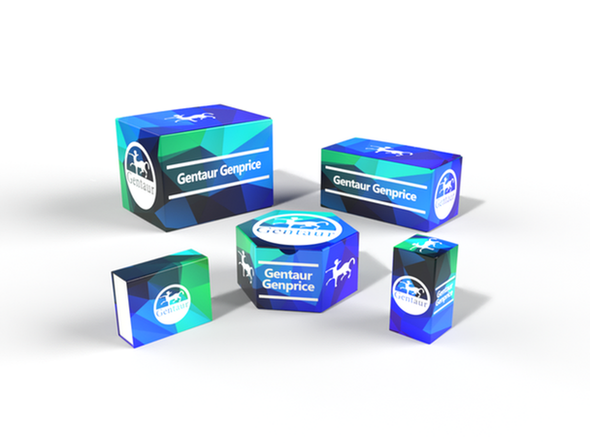Description
ASCL1 Antibody | 60-921 | Gentaur UK, US & Europe Distribution
Host: Rabbit
Reactivity: Human, Mouse
Homology: Predicted species reactivity based on immunogen sequence: Rat
Immunogen: This ASCL1 (Achaete-scute homolog 1) antibody is generated from rabbits immunized with a KLH conjugated synthetic peptide between 166-196 amino acids from the C-terminal region of human ASCL1 (Achaete-scute homolog 1) .
Research Area: Neuroscience
Tested Application: WB
Application: For WB starting dilution is: 1:1000
Specificiy: N/A
Positive Control 1: N/A
Positive Control 2: N/A
Positive Control 3: N/A
Positive Control 4: N/A
Positive Control 5: N/A
Positive Control 6: N/A
Molecular Weight: 25 kDa
Validation: N/A
Isoform: N/A
Purification: This antibody is prepared by Saturated Ammonium Sulfate (SAS) precipitation followed by dialysis
Clonality: Polyclonal
Clone: N/A
Isotype: Rabbit Ig
Conjugate: Unconjugated
Physical State: Liquid
Buffer: Supplied in PBS with 0.09% (W/V) sodium azide.
Concentration: batch dependent
Storage Condition: Store at 4˚C for three months and -20˚C, stable for up to one year. As with all antibodies care should be taken to avoid repeated freeze thaw cycles. Antibodies should not be exposed to prolonged high temperatures.
Alternate Name: Achaete-scute homolog 1, ASH-1, hASH1, Class A basic helix-loop-helix protein 46, bHLHa46, ASCL1, ASH1, BHLHA46, HASH1
User Note: Optimal dilutions for each application to be determined by the researcher.
BACKGROUND: ACSL1, alternatively titled Hash1 or Mash1, is a member of the basic helix-loop-helix (BHLH) family of transcription factors. It activates transcription by binding to the E box (5'-CANNTG-3') . Dimerization with other BHLH proteins is required for efficient DNA binding. ACSL1 plays a role in the neuronal commitment and differentiation and in the generation of olfactory and autonomic neurons. The protein is highly expressed in medullary thyroid cancer and small cell lung cancer and may be a useful marker for these cancers. The presence of a CAG repeat in the gene suggests it may also play a role in tumor formation.






